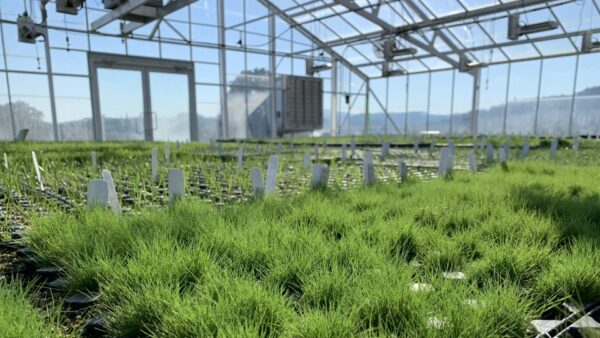Researchers have successfully decoded the structure of a barley protein that provides immunity against a common fungal disease. Understanding these structures could lead to more effective crop protection strategies against diseases in the future.
Mildew is a prevalent yeast disease affecting barley in temperate climates and many regions of Europe, potentially causing crop losses of up to 40%. To defend against powdery mildew, barley has evolved numerous immune receptors that recognize a specific powdery mildew protein, known as an effector, found in only one strain of a genetically diverse powdery mildew population. The blueprints for these immune receptors are resistance genes that plant breeders have been crossing into useful plant varieties from wild forms for decades.
The insights from this study could aid scientists in enhancing the resistance of barley and related species, such as wheat, to this disease, according to a press release. Researchers at the Max Planck Institute for Plant Breeding Research (MPIPZ) in Cologne have successfully determined the structure of an immune receptor called MLA13 in complex with its corresponding fungal effector, AVRA13-1. These findings have been published in the EMBO Journal.
Researchers Paul Schulze-Lefert from the MPIPZ, Elmar Behrmann from the University of Cologne, and Jijie Chai from Westlake University in Hangzhou, China, utilized cryo-electron microscopy (cryo-EM) for their study. This technique involves rapidly freezing samples to cryogenic temperatures to preserve the delicate structures of proteins in their natural folded states. The resulting structure, resolved at the atomic level, reveals how the plant’s immune receptor and the fungal effector interact and the structure of the effector itself.
These findings enabled Aaron W. Lawson to create a synthetic version of another immune receptor, MLA7, which detects a fungal effector called AVRA7. The sequences of MLA immune receptors, including MLA7 and MLA13, are quite similar. Lawson and his co-authors explored whether they could leverage the structure of the MLA13-AVRA13-1 complex to alter the detection specificity of MLA7. By modifying just one amino acid in the protein sequence of MLA7, they successfully developed a new version that recognizes AVRA13-1 while still detecting AVRA7.
Traditional plant breeding is often slow, requiring time-consuming crossings to develop plants with desired traits. In contrast, the fungus causing true powdery mildew in barley reproduces quickly, leading to the rapid emergence of new strains that outpace conventional breeding methods.
This study shows that immune receptors can be specifically modified to alter their specificity, allowing for gene editing to enhance barley’s protection against multiple powdery mildew strains. The genes for MLA immune receptors, which share a common ancestor with grasses like wheat, oats, and rye, are present in these cereal crops. Since MLA receptors can also defend against other fungal pathogens, gene-edited resistance genes could provide a foundation for developing broadly effective MLA receptors, improving the resistance of these staple crops to various economically significant diseases.












